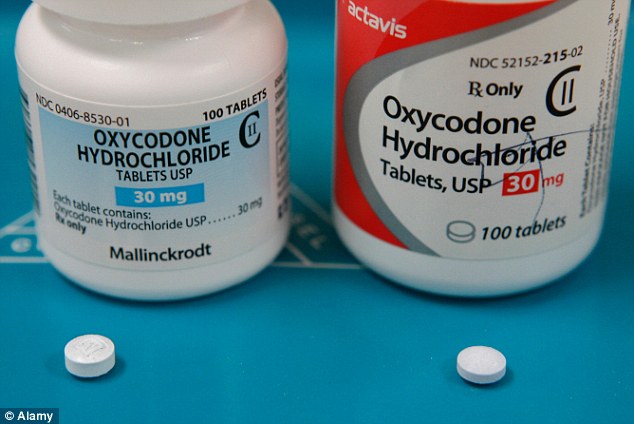
Oxycodone is a semisynthetic opioid synthesized from thebaine, an opioid alkaloid found in the Persian poppy, and one of the many alkaloids More
Oxycodone is a semisynthetic opioid synthesized from thebaine, an opioid alkaloid found in the Persian poppy, and one of the many alkaloids
Oxycodone-an opioid pain killer
Oxycodone; Dihydrohydroxycodeinone; Dihydrone; Dihydroxycodeinone; Oxycodeinone
(1S,5R,13R,17S)-17-hydroxy-10-methoxy-4-methyl-12-oxa-4-azapentacyclo[9.6.1.0¹,¹³.0?,¹?.0?,¹?]octadeca-7(18),8,10-trien-14-one
Oxycodone, a semisynthetic opiate agonist derived from the opioid alkaloid, thebaine, is similar to other phenanthrene derivatives such as hydrocodone and morphine. This is available in combination with acetaminophen or aspirin to control restless leg and pain and Tourette syndromes. Oxycodone acts as a weak agonist at mu, kappa, and delta opioid receptors within the central nervous system (CNS). It affects primarily on mu-type opioid receptors, coupled with G-protein receptors and function as modulators, both positive and negative, of synaptic transmission via G-proteins that activate effector proteins. Binding of the opiate stimulates the exchange of GTP for GDP on the G-protein complex. As the effector system is cAMP and adenylate cyclase located at the inner surface of the plasma membrane, opioids decrease intracellular cAMP by inhibiting adenylate cyclase. Subsequently, the release of nociceptive neurotransmitters such as substance P, GABA, dopamine, acetylcholine, and noradrenaline is inhibited. Opioids such as oxycodone also inhibit the release of somatostatin, vasopressin, glucagon and insulin. Opioids close N-type voltage-operated calcium channels (kappa-receptor agonist) and open calcium-dependent inwardly rectifying potassium channels (mu and delta receptor agonist). This results in hyperpolarization and reduced neuronal excitability.
For the treatment of diarrhoea, pulmonary oedema and for the relief of moderate to moderately severe pain.
Oxycodone is contraindicated in patients who are allergic to narcotic analgesics, paralytic ileus patients, asthmatic patients and individuals with alcohol or substance abuse history.
Store at 20-25°C.
315.3636
C18H21NO4
76-42-6